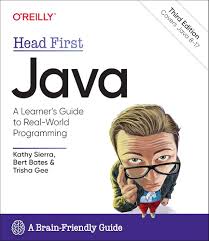Crafting a White Paper: Java, Full-Stack Development, and Software Engineering
Introduction
Java, a versatile and robust programming language, has been a cornerstone of software development for decades. Its "write once, run anywhere" principle, coupled with its strong community and extensive libraries, has made it a popular choice for a wide range of applications, from enterprise systems to mobile apps. This white paper delves into the key aspects of Java, its role in full-stack development, and its significance in the broader context of software engineering.
Core Concepts of Java
- Object-Oriented Programming (OOP): Java is inherently object-oriented, emphasizing the concept of objects and their interactions. This paradigm fosters modularity, reusability, and maintainability.
- Platform Independence: Java's bytecode compilation allows it to run on any platform with a Java Virtual Machine (JVM), ensuring portability.
- Strong Typing: Java's static type system helps detect errors early in the development process, leading to more reliable code.
- Automatic Memory Management: Java's garbage collector handles memory allocation and deallocation, reducing the risk of memory leaks.
- Exception Handling: Java provides a robust mechanism for handling exceptions, ensuring graceful error recovery.
Java in Full-Stack Development
Full-stack development encompasses both front-end and back-end technologies. Java's versatility makes it suitable for both tiers:
- Front-End Development: While not as commonly used as JavaScript for front-end development, Java can be employed with frameworks like Vaadin or GWT to create rich user interfaces.
- Back-End Development: Java excels in back-end development, powering enterprise applications, web services, and APIs. Popular frameworks like Spring Boot and Jakarta EE simplify the development of robust and scalable back-end systems.
Java in Software Engineering
Java's impact extends beyond specific technologies. It plays a crucial role in software engineering principles and practices:
- Design Patterns: Java's object-oriented nature facilitates the implementation of design patterns, promoting code reusability and maintainability.
- Testing and Debugging: Java provides a rich ecosystem of testing frameworks (JUnit, TestNG) and debugging tools, aiding in the development of high-quality software.
- Continuous Integration and Continuous Delivery (CI/CD): Java integrates seamlessly with CI/CD pipelines, enabling automated builds, testing, and deployment.
- Cloud-Native Development: Java is well-suited for cloud-native development, with frameworks like Spring Cloud providing tools for building microservices and deploying to cloud platforms.
References
- Head First Java: A popular introductory book that uses a unique approach to teaching Java concepts.
- Murach's Java Programming: A comprehensive guide covering Java fundamentals, object-oriented programming, and advanced topics.
- Oracle's Java Documentation: The official documentation for the Java programming language.
- Spring Framework: A powerful framework for building enterprise applications.
- Jakarta EE: A platform for enterprise Java development.
Conclusion
Java's enduring popularity and versatility make it a valuable asset for developers and software engineers. Its strong foundation in object-oriented programming, combined with its extensive ecosystem of tools and frameworks, empowers developers to build robust, scalable, and maintainable applications. As technology continues to evolve, Java remains a cornerstone of the software development landscape.
Note: To enhance the white paper, consider adding specific examples, code snippets, and diagrams to illustrate key concepts and best practices. Additionally, you might explore emerging trends in Java, such as functional programming and reactive programming, to provide a more comprehensive overview.



